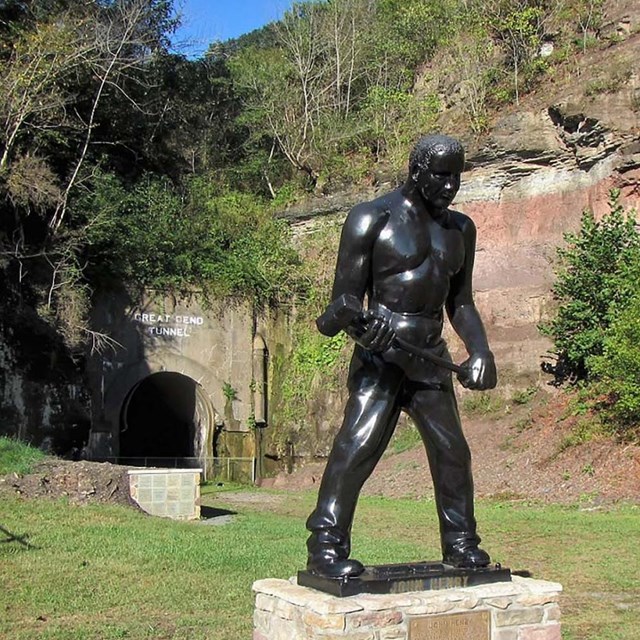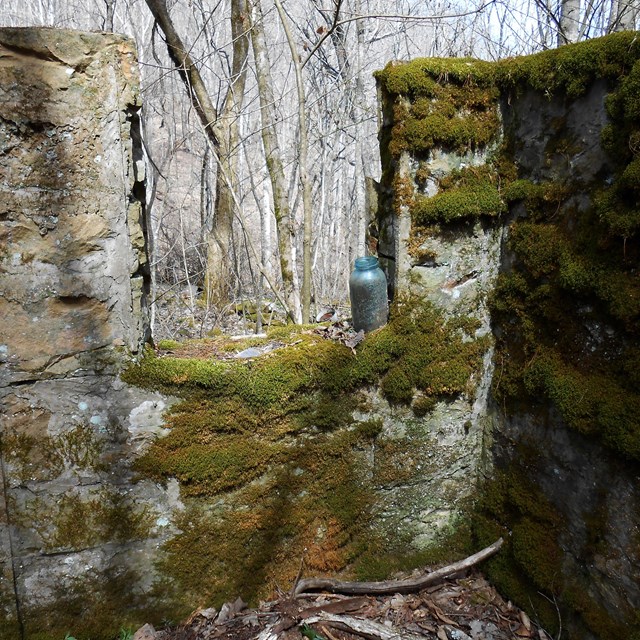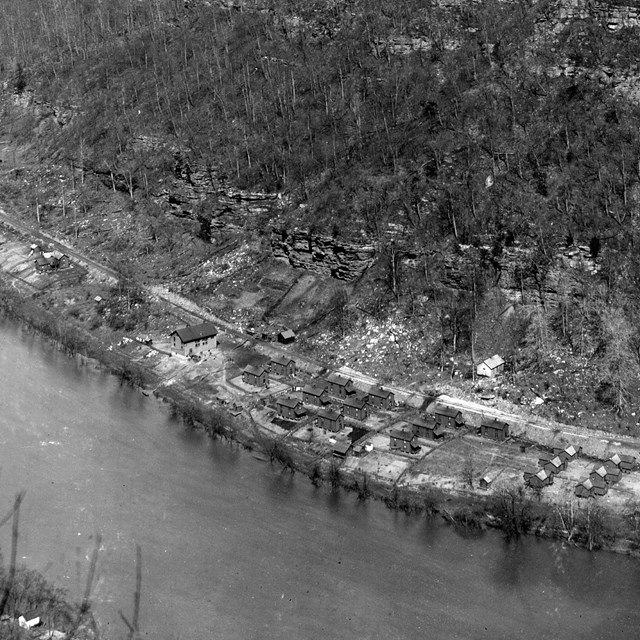
Before the whitewater rafting industry, other boats floated along the New River. Long, flat bottomed boats called batteaux carried commerce down the New River. The name batteau is from the French word bateau, meaning boat. The plural form is batteaux. The New River has always been an important travel corridor. It leads north and west through the rugged Appalachian Mountains. The New River watershed connects two major watersheds to each other. On the Atlantic side is the James River along the Eastern Continental Divide. On the Mississippi side are the Kanawha and the Ohio rivers. Between them, bridging the gap, is the New River. 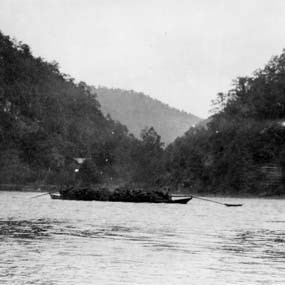
NPS The Search for a WaterwayIn the early days of the United States, many people looked for ways to connect the East and the West. George Washington envisioned a cross country canal route along the New River pathway. It wasn't until 1812 that the first exploratory expedition began. John Marshall, fourth Chief Justice of the Supreme Court, led the batteau expedition. Starting on the James River, they continued down the Greenbrier to Hinton. At the confluence with the Greenbrier, Marshall continued downstream on the New River. The expedition travelled with great difficulty along the New. They passed present day Hawks Nest State Park and named it for the abundance of osprey they sighted. At the end of the expedition, Marshall reported that the route was not suitable for a canal. The whitewater rapids of the lower New River Gorge were too wild for commercial batteaus. This dashed Washington's dream of a southern Chesapeake and Ohio Canal. Batteaux Come to the NewThe overland Midland Trail became the main commercial connector. This land route bypassed the New River Gorge on the way to the Kanawha. But batteaux provided commercial transportation along the lower Greenbrier and upper New Rivers. In the mid-1800s, the Army Corp of Engineers began work to improve navigation on the rivers. They blasted sluice channels through ledges and rapids to improve access for batteaux. For many years before the coming of the railroad, batteaux carried cargo on the New River. They travelled downstream as far as Bateau Mountain, now Batoff Mountain, near Grandview. Betteaux crews propelled the boats along the shallow rivers by pushing long poles along the side of the betteaux. They steered with long sweeping rudders at each end of the boat. Beatteaux carried lumber, agricultural produce, and mercantile products. During construction of the railway, beatteaux also hauled railroad supplies.When the Chesapeake and Ohio Railway opened in 1873, it transformed the area. Downstream from Hinton, a string of booming coal company towns sprung up along the river. 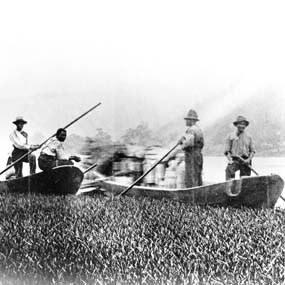
NPS African Americans and BatteauxThe batteau story of the New River is also an African-American heritage story. Many batteau captains and crews were African-American. Like many jobs in New River Gorge, working on a batteau was hard and dangerous work. The work included loading and unloading cargo as well as navigating the boats on the river. Poling boats upstream and downstream while steering through river hazards was difficult. The job required unique skills and abilities. This allowed crews to find an autonomy and equality. Such equality was not easily available for African-Americans in society at that time. The batteaux offered freedom of a vagabond life on the river. It also offered the chance for the ambitious and skilled to become boat captains. LegacyAlthough batteaux no longer float along the New River, visitors to the park can still see one. At Sandstone Visitor Center, the "Minner" is on display. This historic batteau reproduction built in 2005 sits just outside the visitor center. It is a reminder of the work of the batteaux on the New River and the brave men who piloted them. More New River Gorge Stories
|
Last updated: September 14, 2023

